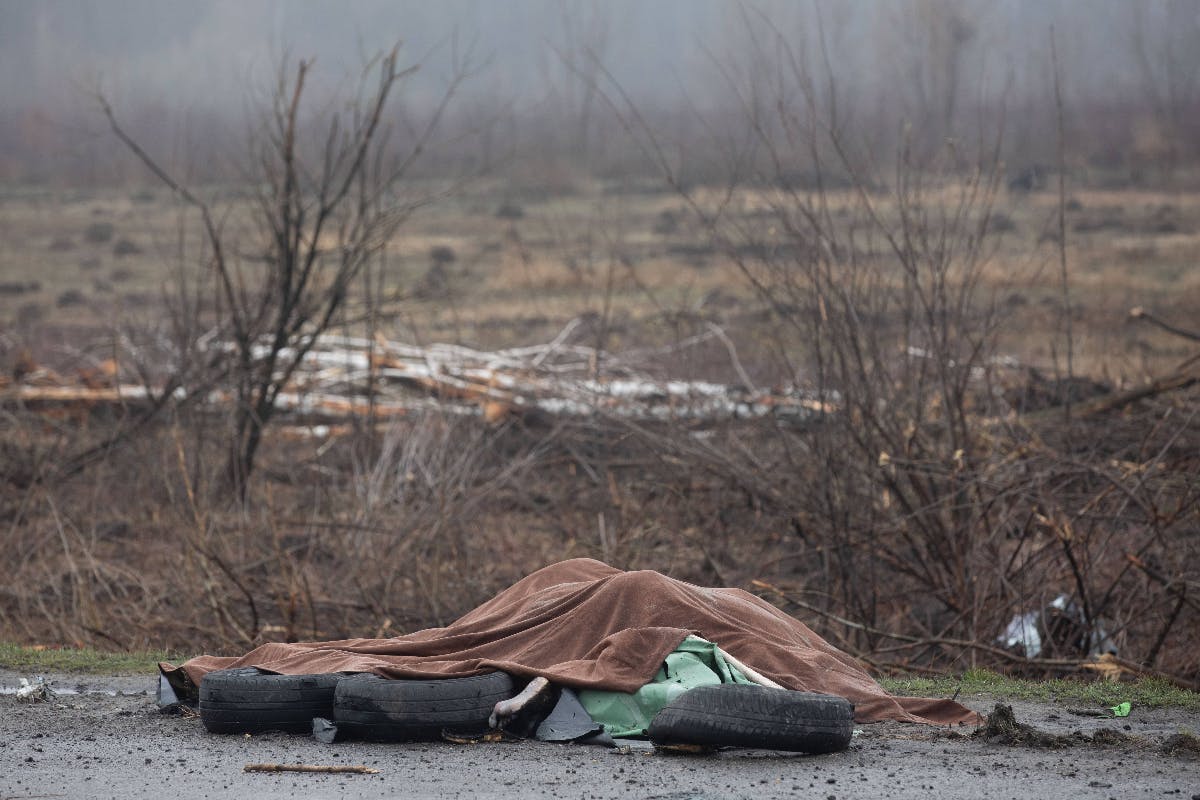Beyond Bucha: A Gruesome Mosaic of Brutality Emerging in Ukraine, One Photograph at a Time
A reality is dawning that the cruelty inflicted by Russian forces upon Ukrainians may be more widespread than initially thought.

The world is piecing together, one picture at a time, a gruesome mosaic of the brutality visited upon the outskirts of Kiev in the wake of a hasty Russian retreat from battle-scarred towns in those areas on April 2. Much of the focus has been on the town of Bucha, where satellite imagery shows a trench dug into the grounds of a church where a mass grave was found after Russian forces retreated.
A reality is dawning that the cruelty may be more widespread than initially thought.
Ukrainian officials said the bodies of 410 civilians were found in Kyiv-area towns that were recently retaken from Russian forces. They speak of discoveries that followed a Russian withdrawal from the area after Moscow said it was focusing its offensive on the country’s east, the AP reported. Russian troops had rolled into Bucha in the early days of the invasion and stayed until March 30.
On April 2, Ukraine’s ministry of defense tweeted a graphic image of “dead civilians seen near a highway 20 km outside of Kyiv,” with the added description, “Under the blanket are 4-5 dead naked women whom the [Russian] barbarians tried to burn right there on the side of the road.” The photo the ministry tweeted was taken by Mikhail Palinchak, a documentary and street photographer from Kiev.
“My impression is that civilians were deliberately targeted, and on both sides of the roads we found signs of the Russian military who dug along the road,” Mr. Palinchak, told The New York Sun via email. “But I know for sure only what I saw and photographed.”
Mr. Palinchak went to the site of the attacked highway, which he says is now fully under Ukrainian control, as part of a team of three. While he did not personally feel that he was in danger as he did so, he says that he did feel “shock and anger.”
Other images of the destruction that Mr. Palinchak captured along that stretch of highway are no less horrific: lone bodies clearly in civilian attire splayed in the middle of a bleak and ruined roadway, charred and mangled corpses lying next to the husks of burned-out cars which appear to have come under fire while still in motion, the bodies perhaps thrown from them by the force of explosion. A burned-out gas station, the likes of which have been photographed in other locations in Ukraine, and a body lying only a few feet from a gas pump. An apocalyptic vision, right outside the capital.
“This is the E40 highway between Mila and Mriya villages, close to Dmytrivka village through which there is a road to Irpin, Bucha and Hostomel,” Mr. Palinchak said. “E40 was one of the shortest and popular roads from Kyiv to Western Ukraine. On the first days of invasion, civilians by car fled along this highway.”
Mr. Palinchak said that he was on the scene on April 2, but there are signs that at least some of the victims he photographed could have been killed in the run-up to the Russian retreat from the area. “Relatives of one missing person contacted me today about license plates of one of the cars, which is very similar to the plates of their relative’s car,” he said. That individual, according to what his relatives told Mr. Palinchak, had been missing since March 25. “I don’t know how long bodies were just laying on the roads,” he said.
While many of the images that have been blanketing social media and the global press in the past 48 hours come from the town of Bucha itself and appear to have been taken on April 2, Mr. Palinchak’s report points to the prospect that the alleged Russian war crimes were not a one-off, but part of a larger pattern of indiscriminate violence against civilians.

